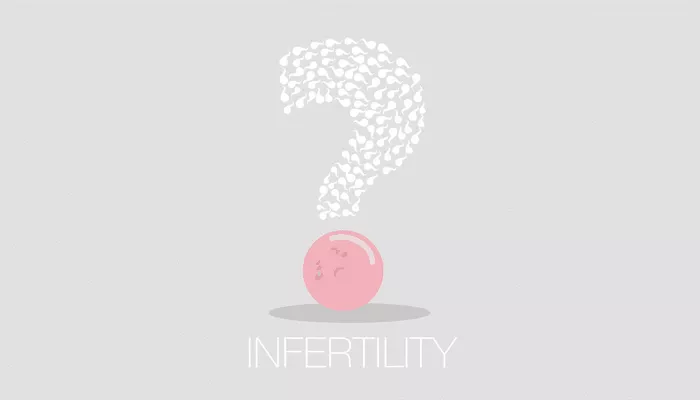Epididymitis is an inflammation of the epididymis, a tube located behind the testicles where sperm are stored and matured. This condition can result from various factors, including bacterial infections, sexually transmitted infections (STIs), or even non-infectious causes. The symptoms of epididymitis often include pain, swelling, and tenderness in the scrotal area. While the condition can be treated effectively with antibiotics, in some cases, it may lead to long-term or chronic pain. This article explores whether epididymitis can result in chronic pain, the factors contributing to this, and the treatment options available for managing persistent symptoms.
What is Epididymitis?
Epididymitis refers to the inflammation of the epididymis, the small coiled tube that sits behind each testicle and plays a crucial role in storing and maturing sperm. When the epididymis becomes infected or inflamed, it can cause significant discomfort, including testicular pain, swelling, and redness. In most cases, epididymitis is caused by bacterial infections, particularly from sexually transmitted infections like chlamydia or gonorrhea, although urinary tract infections (UTIs) and other bacteria can also be culprits.
Although epididymitis is often treatable with antibiotics, there are instances where the condition may cause persistent or chronic pain, even after the infection has been cleared. Chronic epididymitis can be a difficult condition to manage, as it may not always respond well to conventional treatments. Understanding why some individuals experience long-term pain after epididymitis is essential for seeking appropriate care.
Acute vs. Chronic Epididymitis
Epididymitis is typically classified into two categories: acute and chronic. Acute epididymitis occurs suddenly and usually involves severe pain and swelling. It often responds well to antibiotics and other treatments, with symptoms improving within a few days or weeks.
However, when epididymitis persists for more than three months or when pain continues long after the infection has been treated, it may be classified as chronic epididymitis. Chronic epididymitis can be more challenging to manage and may involve ongoing discomfort, even in the absence of an active infection. This condition can significantly impact a person’s quality of life, leading to persistent pain, discomfort, and, in some cases, emotional distress.
How Can Epididymitis Lead to Chronic Pain?
While many individuals with epididymitis experience relief after completing a course of antibiotics, some may continue to suffer from chronic pain. Several factors can contribute to this phenomenon, including persistent inflammation, scar tissue formation, and nerve damage.
1. Persistent Inflammation
In some cases, the inflammation caused by epididymitis may not resolve completely after the infection has been treated. This persistent inflammation can lead to chronic discomfort, even when no active infection is present. Chronic inflammation can affect the tissues surrounding the epididymis and other parts of the reproductive system, causing long-term pain.
The body’s immune response to the infection may continue to cause irritation, leading to ongoing swelling and discomfort. This type of pain may fluctuate in intensity, sometimes worsening with certain activities or movements. Even after the infection has cleared, the inflammatory response can contribute to persistent pain.
2. Scar Tissue and Fibrosis
One of the more common long-term effects of untreated or severe epididymitis is the formation of scar tissue. When the body heals from an infection or injury, it often produces scar tissue as part of the healing process. In the case of epididymitis, scar tissue can form in the epididymis or the surrounding tissues, leading to fibrosis.
Fibrosis can cause stiffness, reduced mobility, and tenderness in the affected area. Scar tissue may also create blockages or obstructions in the epididymis, leading to a buildup of sperm. This buildup, known as a sperm granuloma, can cause ongoing pain and discomfort. In some cases, the scar tissue may compress nearby nerves, leading to nerve pain that can persist long after the infection has been treated.
3. Nerve Damage
The epididymis and the testicles are surrounded by a network of nerves that transmit sensations of pain and touch. During an episode of epididymitis, inflammation and swelling can put pressure on these nerves, causing sharp or radiating pain.
In some cases, the inflammation can result in nerve damage, either due to direct pressure from the swelling or from scar tissue formation. When nerve damage occurs, the affected area may become hypersensitive, leading to ongoing pain, even without further inflammation. This nerve pain can be difficult to treat and may require specialized care, such as nerve blocks or other pain management strategies.
4. Psychosomatic Factors
The experience of chronic pain, especially following an episode of epididymitis, can sometimes lead to psychosomatic factors that contribute to the persistence of discomfort. In some individuals, the ongoing pain may become more pronounced due to anxiety, stress, or emotional distress related to the condition. This can create a feedback loop in which the perception of pain is amplified, making it more challenging to manage.
Psychological factors, such as depression or anxiety, may also affect the way the brain processes pain signals, leading to heightened sensitivity in the affected area. Therefore, addressing both the physical and emotional aspects of chronic epididymitis is essential for effective pain management.
What Are the Symptoms of Chronic Epididymitis?
Chronic epididymitis can present a variety of symptoms, some of which may be similar to those experienced during the acute phase of the condition. These symptoms can vary in intensity and duration and may include:
- Persistent or intermittent pain in the scrotum, testicles, or lower abdomen
- Swelling and tenderness in the scrotal area
- A feeling of heaviness or fullness in the scrotum
- Pain that worsens with physical activity, sexual activity, or ejaculation
- Discomfort that fluctuates or persists even when no infection is present
For individuals with chronic epididymitis, pain management is a crucial aspect of treatment. Working closely with a healthcare provider can help ensure that the underlying causes of the pain are addressed and that appropriate interventions are implemented.
Treatment Options for Chronic Epididymitis
Managing chronic epididymitis typically involves a combination of approaches aimed at reducing inflammation, alleviating pain, and preventing further complications. Treatment may include:
1. Pain Management
Pain relief is an essential component of managing chronic epididymitis. Over-the-counter pain relievers, such as ibuprofen or acetaminophen, may help reduce inflammation and alleviate discomfort. In some cases, stronger prescription pain medications may be necessary for individuals with severe pain.
For nerve-related pain, medications such as anticonvulsants or antidepressants may be prescribed to help modulate the way the nervous system processes pain signals. Nerve blocks or other targeted therapies may also be considered in more severe cases.
2. Anti-Inflammatory Treatments
Chronic inflammation can contribute to ongoing pain and discomfort. In some cases, corticosteroid injections or other anti-inflammatory treatments may be used to reduce inflammation in the epididymis and surrounding tissues. These treatments can help relieve pain and improve the overall function of the affected area.
3. Physical Therapy
For individuals experiencing ongoing discomfort due to scar tissue or fibrosis, physical therapy may be helpful. Specialized exercises and manual therapies can help improve mobility, reduce stiffness, and alleviate pain. A physical therapist may also work with the individual to identify movements or activities that exacerbate the pain and recommend strategies to avoid them.
4. Surgery
In rare cases, surgery may be necessary to address persistent pain or complications related to chronic epididymitis. Surgery may involve the removal of scar tissue or a sperm granuloma, or, in extreme cases, the removal of the epididymis itself (epididymectomy). Surgery is typically considered a last resort when other treatments have not been effective in managing the pain.
Conclusion
Epididymitis can lead to chronic pain in some individuals, especially if the condition is severe, untreated, or if complications like scarring and nerve damage occur. While chronic epididymitis can be challenging to manage, various treatments are available to help alleviate symptoms and improve quality of life. If you experience persistent pain after an episode of epididymitis, it is important to consult with a healthcare provider who can help determine the most appropriate course of action for your specific situation.
Related topics:





















